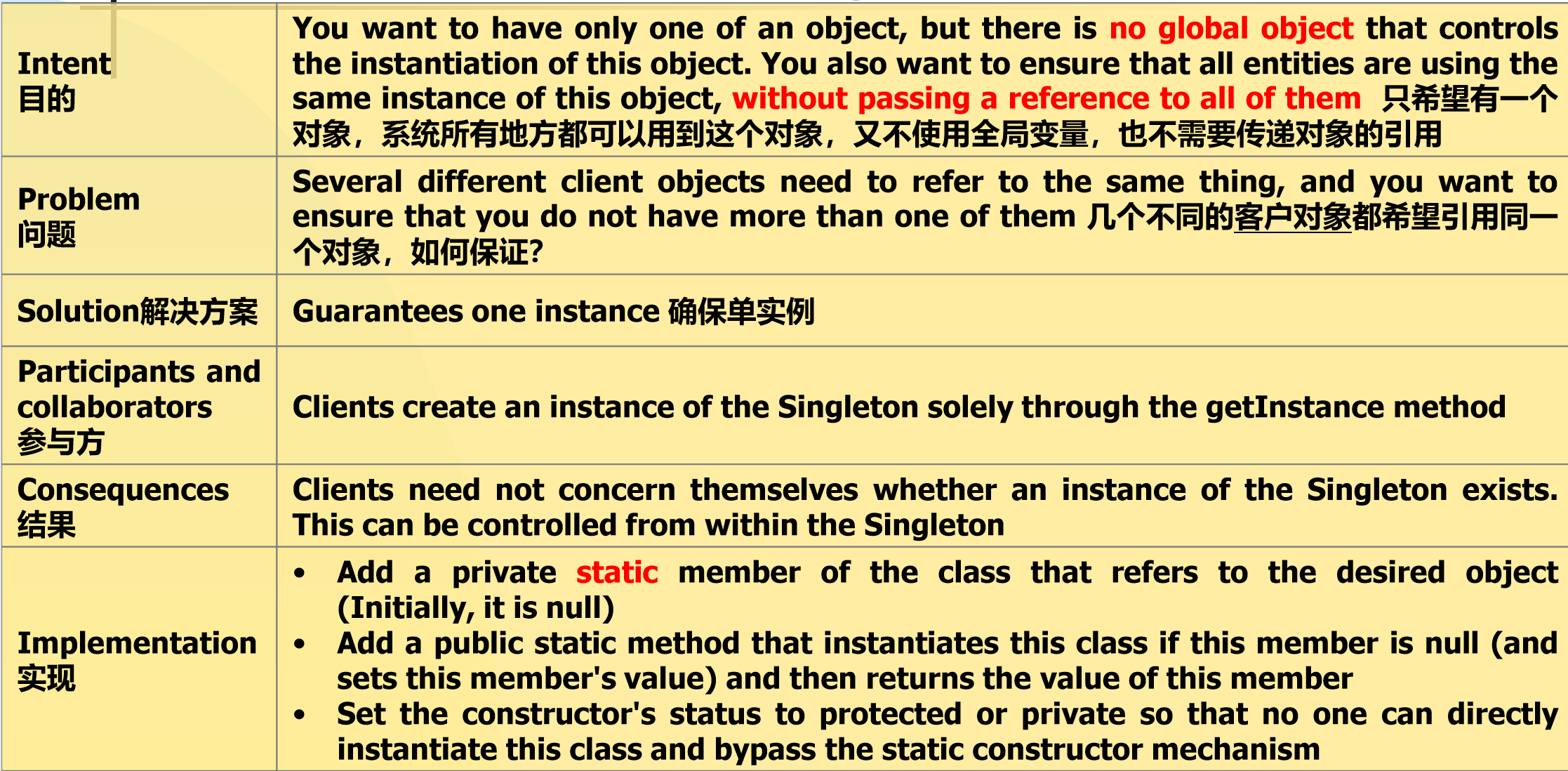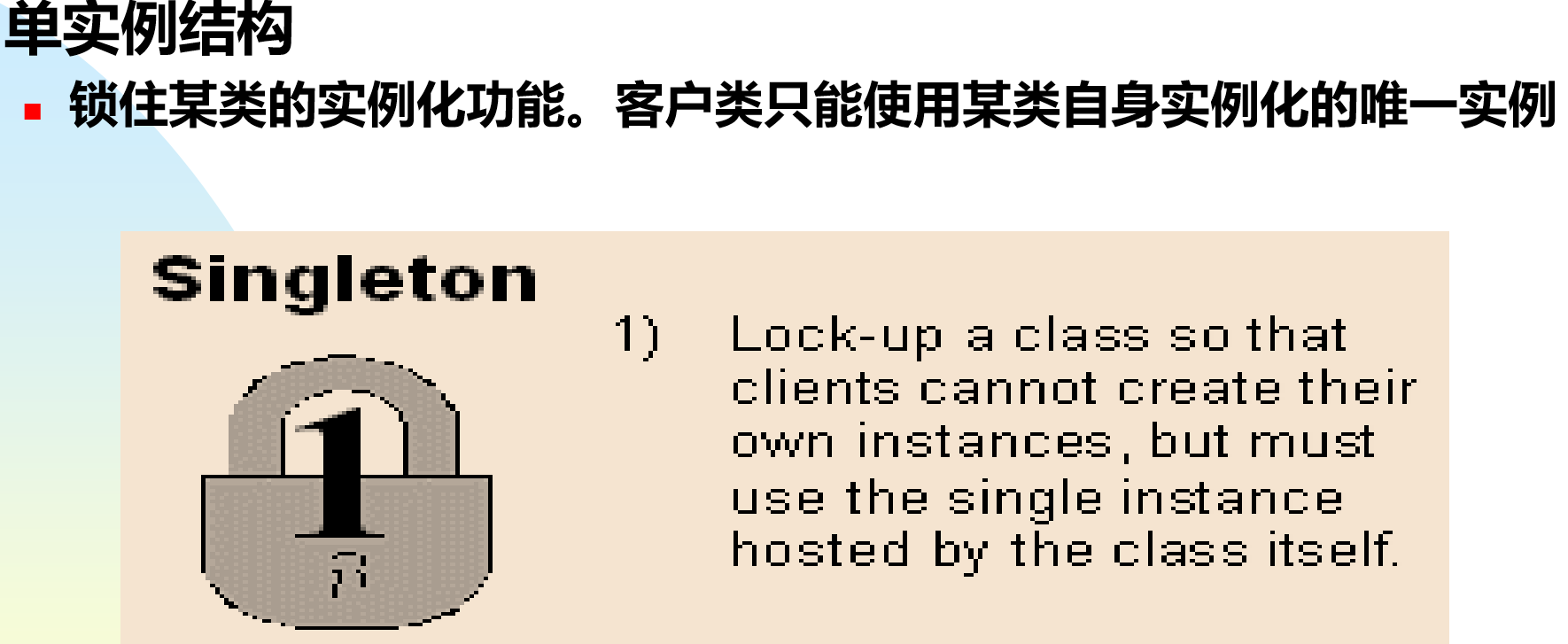单例模式(Singleton Pattern)是 Java 中最简单的设计模式之一。这种类型的设计模式属于创建型模式,它提供了一种创建对象的最佳方式。
1.什么时候需要单实例模式?
整个类在系统运行过程中只允许一个对象,并且这个对象在整个系统的任何地方,都能够被随时随地的访问得到,并且所有的客户访问的都是同一个对象。
2.怎么来做呢?
三个要点:(1)你要定义一个私有化的构造函数
(2)你要定义一个私有的成员变量
(3)你要定义一个共有的get函数(所有的用户通过这个get函数都能够访问到唯一的这个单实例)
单例类只能有一个实例。
单例类必须自己创建自己的唯一实例。
单例类必须给所有其他对象提供这一实例。



1.单例模式——线程安全的饿汉模式
public class Singleton {
private static Singleton instance = new Singleton();
private Singleton(){
}
public static Singleton getInstance(){
return instance;
}
}
2.单例模式——线程安全的懒汉模式
public class Singleton {
private static Singleton instance = null;
private Singleton(){
}
//如果不加synchronized,则是线程不安全的
public static synchronized Singleton getInstance(){
if(instance == null){
instance = new Singleton();
}
return instance;
}
}
3.单例模式——线程安全的懒汉模式改进版(双重检查锁)
/**
*双重锁:为了减少同步的开销
*/
public class Singleton{
// 静态可见的实例
private static volatile Singleton instance = null;
// 无参构造器
private Singleton(){
}
public Singleton getInstance(){
if(instance == null){
synchronized(Singleton.class){
if(instance == null){
instance = new Singleton();
}
}
}
return instance;
}
}
4.单例模式——私有的内部工厂类(线程安全)
public class Singleton {
private Singleton(){
}
public static Singleton getInstance(){
return SingletonFactory.Instance;
}
private static class SingletonFactory{
private static Singleton Instance = new Singleton();
}
}
//内部类也可以换成内部接口,但是工厂类变量的作用域需为public